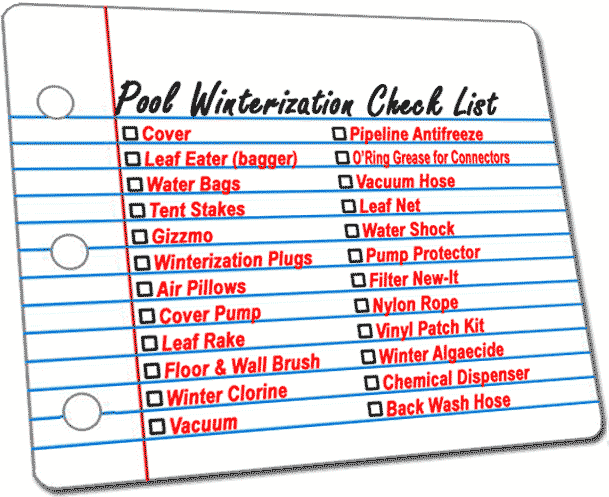As the weather starts to cool down and winter approaches, many people find themselves wondering what to do with their above-ground pools. Are they simply left to collect snow and ice, or are there alternative options to consider? In this article, we will explore some practical and creative ideas for making the most out of your above-ground pool during the winter months. From winterizing techniques to repurposing the pool area, you’ll discover how to keep your pool area functional and enjoyable, even when the temperatures drop. So, let’s dive right in and explore the possibilities!
Draining and Covering the Pool
Draining the pool
When winter arrives, one of the essential steps in winterizing your above-ground pool is draining the water. Draining the pool ensures that there is no water left to freeze and cause damage to the pool’s structure or equipment during the cold winter months. To drain the pool, start by turning off the pool’s pump and filtering system. Then, attach a hose to the pool’s drain valve and let gravity do its work. Make sure to direct the water away from the pool area to prevent any potential damage.
Covering the pool
After draining the pool, the next step is to cover it. A pool cover serves as a protective barrier, preventing debris and leaves from falling into the pool and keeping it clean throughout the winter season. There are various types of pool covers available, such as solid covers and mesh covers, each with their own benefits. Choose a cover that suits your needs and ensure that it fits securely over the pool. A properly covered pool will not only maintain its cleanliness but also preserve the chemicals and balance of the water.
Winterizing the Pool
Adding winter chemicals
Before closing up your above-ground pool for the winter, it is essential to add winter chemicals to ensure that the water remains in good condition. Winterizing chemicals, such as algaecides and winterizing kits, help prevent the growth of algae and bacteria during the freezing temperatures. Follow the instructions provided by the chemical manufacturer to properly add the winter chemicals to your pool. This step will help maintain the water quality and make the opening process easier when spring arrives.
Balancing pool water
Another crucial aspect of winterizing your above-ground pool is balancing the pool water chemistry. Testing the water and adjusting the chemical levels is important to prevent various issues, such as scale formation, corrosion, or the growth of algae. Use a water testing kit to determine the pH, alkalinity, and sanitizer levels of the pool water. Then, add any necessary chemicals to achieve the recommended levels. Maintaining proper water balance throughout the winter will help protect the pool’s surface and equipment from damage.
Lowering water level
Lowering the water level in your above-ground pool is an important step in winterizing. The purpose of reducing the water level is to allow for any expansion of ice that might occur without damaging the pool walls or structure. Check the manufacturer’s guidelines for the recommended water level to ensure the pool is properly prepared for winter. Use a submersible pump or a vacuum to drain the excess water until it reaches the desired level. Remember to keep an eye on the water level throughout the winter, topping it up if necessary.
Cleaning the pool
Cleaning the pool thoroughly before winterizing is crucial to prevent any potential issues during the winter months. Vacuum the pool to remove any debris and leaves, brush the walls and floor to eliminate any algae or dirt, and skim the surface using a pool net to catch any floating debris. Pay special attention to areas around the skimmer and return jets, as they tend to accumulate debris. By cleaning the pool, you ensure that it is free from contaminants, which helps maintain water quality and prevent stains or damage to the pool surface over the winter.
This image is property of images.pexels.com.
Removing and Storing Pool Accessories
Removing ladders and handrails
Before closing up your above-ground pool for the winter, it is necessary to remove any removable ladders and handrails. Doing so prevents any potential damage caused by winter weather conditions and ensures that these accessories remain in good condition for the next swimming season. Carefully detach the ladders from the pool edge and handrails from their mounting brackets, following the manufacturer’s instructions. Clean them thoroughly and store them in a dry place away from the elements.
Taking out skimmer baskets and pool cleaners
To properly winterize your above-ground pool, it is important to remove the skimmer baskets and pool cleaners. Skimmer baskets collect debris and leaves from the water, preventing them from clogging the filtration system. Remove the skimmer baskets and clean them thoroughly, removing any trapped debris. Additionally, remove any automated or manual pool cleaners and clean them according to the manufacturer’s instructions. Properly cleaning and storing these accessories will help ensure their longevity and efficiency.
Storing pool toys and floats
As you prepare your above-ground pool for the winter season, it’s essential to remove and store any pool toys and floats. Leaving these items in the pool can cause them to degrade faster due to exposure to the harsh winter weather. Take the time to clean each item before storing them in a dry and secure location, away from potential damage. Storing pool toys and floats properly will not only prolong their lifespan but also keep your pool area neat and organized during the winter months.
Preparing the Pool Pump and Filter
Shutting off power and disconnecting
Before winterizing your above-ground pool, it is crucial to shut off the power supply and disconnect the pool pump and filter. Cutting off the power ensures that the pump and filter will not operate during the winter, saving energy and preventing any potential damage. Locate the circuit breaker or switch that controls the power supply to the pool equipment and turn it off. Then, disconnect the pump and filter from their power source, following the manufacturer’s instructions.
Removing and cleaning the filter
Cleaning the filter is an important step in preparing your above-ground pool for the winter season. A clean filter ensures optimal performance and helps maintain water clarity throughout the winter months. Depending on the type of filter you have (sand, cartridge, or diatomaceous earth), follow the manufacturer’s instructions to remove and clean the filter. Rinse the filter thoroughly to remove any trapped debris and contaminants. Once cleaned, allow the filter to dry completely before storing it in a dry and safe place.
Draining and protecting the pump
To prevent any potential damage to the pool pump during the winter, it is necessary to drain and protect it. Start by disconnecting the hoses and removing any plugs from the pump and filter. Drain any remaining water from the pump and impeller housing by tilting it or using a shop vac. Then, depending on your climate, it may be necessary to protect the pump from freezing temperatures by covering it with an insulating material, such as a pool pump cover or an old blanket. This step ensures that the pump remains in good condition and ready for use in the next swimming season.
This image is property of images.pexels.com.
Winter Pool Maintenance
Regular inspection and maintenance
Even during the winter season, it is important to perform regular inspections and maintenance on your above-ground pool. Check the pool cover for any signs of damage or sagging and make necessary repairs. Monitor the water level to ensure it remains at the recommended level, topping up if necessary. Additionally, inspect the pool area for any signs of debris buildup that may need to be removed. By conducting regular maintenance and inspections, you can address any issues promptly and ensure that your pool stays in good condition throughout the winter.
Preventing ice damage
Ice formation is common during the winter months, and it can potentially cause damage to your above-ground pool. To prevent ice damage, it is essential to closely monitor the pool’s water level and remove any excess water. Additionally, using an ice compensator, or pool pillow, placed under the pool cover can help distribute the weight of the ice and reduce stress on the pool walls. Regularly check for any ice buildup on the cover and remove it gently to prevent tears or damage. By taking preventative measures, you can minimize the risk of ice-related damage to your pool.
Removing snow accumulation
Snowfall is a common occurrence during the winter, and it is important to remove any accumulated snow from the pool cover. Excessive snow can lead to cover damage or excessive stress on the pool walls. Use a soft broom or a snow rake specifically designed for pool covers to gently remove the snow. Start from the middle of the cover and work your way towards the edges, being careful not to drag the snow across the cover. Regularly clearing snow accumulation will help maintain the integrity of the cover and prevent any potential damage to your above-ground pool.
Winter Pool Water Treatments
Shock treatment
Performing a shock treatment on your above-ground pool before winter helps eliminate any contaminants and ensures that the water remains balanced and clean throughout the colder months. Shock treatments involve adding higher doses of chlorine or non-chlorine shock to the pool water to kill any bacteria, algae, or other organic matter. Follow the manufacturer’s instructions for the recommended amount of shock treatment based on the size of your pool. Once the shock treatment is complete, give the water some time to circulate before covering the pool for the winter.
Algaecide application
To prevent the growth of algae during the winter season, it is recommended to apply an algaecide to your above-ground pool. Algaecides work by killing and inhibiting algae growth, keeping the water clear and free from green or cloudy appearance. Choose an algaecide product that is suitable for winter use and follow the manufacturer’s instructions for the correct dosage based on your pool size. Adding algaecide to your pool water, in combination with regular winterizing chemicals, helps maintain the pool’s water quality and reduces the need for extensive cleaning and maintenance in the spring.
Testing and adjusting water chemistry
Even during the winter, it is important to regularly test and adjust the water chemistry of your above-ground pool to ensure that it remains balanced and safe. Use a water testing kit to measure the pH, alkalinity, and sanitizer levels. Adjust any imbalances by adding the necessary chemicals according to the test results. Maintaining proper water chemistry throughout the winter prevents damage to the pool surface, equipment, and ensures that the water remains free from harmful bacteria or algae. Test the water at least once a month and make adjustments as needed.
This image is property of images.pexels.com.
Preparing for Freezing Temperatures
Using antifreeze products
To protect your above-ground pool from freezing temperatures, consider using antifreeze products specifically designed for pool use. Antifreeze can be added to the pool plumbing lines and other vulnerable areas to prevent freezing and potential damage. Follow the manufacturer’s instructions for the recommended type and amount of antifreeze for your pool size and climate. Adding antifreeze to your pool system is an extra precautionary measure to ensure that the plumbing remains intact and functional throughout the winter months.
Insulating and covering exposed parts
In regions with extremely cold temperatures, it is essential to insulate and cover any exposed parts of your above-ground pool to protect it from freezing. Insulate the pool plumbing lines using pool-specific insulation wrap or foam pipe covers. Additionally, cover any exposed areas or equipment not protected by the pool cover, such as the pump or filter, with insulating materials. This will help maintain a more consistent temperature and protect these components from freezing. By taking these measures, you can safeguard your above-ground pool against the harsh winter weather conditions.
Winter Pool Safety Measures
Fencing or securing the pool area
Even during the winter season, it is crucial to prioritize pool safety. If you have an above-ground pool, consider fencing or securing the pool area to prevent any accidents or unauthorized access. Install a sturdy fence around the pool area with a self-closing and self-latching gate that remains locked when not in use. Alternatively, if you have a removable ladder, ensure that it is stored securely and out of reach. These safety measures help ensure that the pool remains inaccessible and reduces the risk of any potential accidents during the winter months.
Installing pool safety covers
In addition to fencing or securing the pool area, installing a pool safety cover is another important winter pool safety measure. Pool safety covers are designed to provide a barrier over the pool, preventing people or pets from falling into the water. These covers are typically made from durable materials and can support the weight of an adult if installed correctly. Ensure that the pool safety cover fits securely over the pool and is properly anchored to prevent any accidental openings. Pool safety covers are an effective way to enhance pool safety and peace of mind during the winter season.
Monitoring the Pool during Winter
Regular check-ups
While your above-ground pool may seem dormant during the winter months, it is still important to perform regular check-ups to ensure everything is in order. Monitor the pool cover for any signs of damage or sagging and make any necessary repairs. Inspect the pool area for signs of debris buildup that may need to be removed. Additionally, check the water level to ensure it remains at the recommended level. By conducting regular check-ups, you can identify and address any potential issues promptly, ensuring that your pool remains in good condition throughout the winter.
Snow removal
During the winter season, snow accumulation is inevitable, and it is important to remove any accumulated snow from the pool cover. Excessive snow on the cover can lead to damage or sagging. Use a soft broom or a snow rake specifically designed for pool covers to gently remove the snow. Start from the middle of the cover and work your way towards the edges, being careful not to drag the snow across the cover. Regularly clearing snow accumulation will help maintain the integrity of the cover and prevent any potential damage to your above-ground pool.
Dealing with potential issues
Despite taking preventive measures, there may be instances where issues arise with your above-ground pool during the winter season. Common issues can include pump or filter malfunctions, cover damage, or unexpected changes in water chemistry. If you encounter any problems, it is important to address them promptly. Consult your pool manufacturer’s manual or contact a professional pool service company for assistance. Taking quick action to resolve any issues will help prevent further damage and ensure that your pool is ready for use when spring arrives.
Pool Opening in Spring
Removing the cover
As winter comes to an end, it is time to prepare your above-ground pool for the upcoming swimming season by removing the cover. Start by clearing the cover of any debris or leaves that may have accumulated during the winter. Carefully remove the cover, ensuring that no debris falls into the pool. Clean and dry the cover before folding and storing it in a dry place. Be cautious while removing the cover to prevent any water or debris from contaminating the pool water.
Cleaning and refilling the pool
After removing the cover, it is crucial to clean and refill the pool before it is ready for use. Start by skimming the pool surface to remove any debris or leaves that may have entered during the winter. Brush the pool walls and floor to eliminate any algae or dirt buildup. Use a pool vacuum to thoroughly clean the pool, paying attention to hard-to-reach areas. Once cleaned, refill the pool to the proper water level, ensuring that it is balanced and ready for the next step in the pool opening process.
Reconnecting equipment
As part of the pool opening process, it is necessary to reconnect the pool equipment that was disconnected during the winterization. Start by reconnecting the pump and filter, ensuring that all connections are secure. Check the hoses, valves, and fittings for any signs of damage or leaks and make necessary repairs. Once the equipment is reconnected, turn on the power supply and test the pump and filter to ensure proper functionality. Reconnecting the equipment correctly sets the stage for the pool’s proper operation throughout the swimming season.
Balancing the water chemistry
Before diving into your above-ground pool for the first time in the spring, balancing the water chemistry is essential. Use a water testing kit to measure the pH, alkalinity, sanitizer, and other necessary levels. Adjust any imbalances by adding the appropriate chemicals based on the test results. Balancing the water chemistry ensures a safe and enjoyable swimming experience while protecting the pool’s surface and equipment. Regularly test and adjust the water chemistry throughout the swimming season to maintain optimal conditions in your above-ground pool.
In conclusion, when winter arrives, it is crucial to properly prepare your above-ground pool for the colder months. Draining and covering the pool, winterizing the pool, removing and storing pool accessories, preparing the pool pump and filter, and implementing various winter maintenance measures are essential steps to ensure your pool remains in good condition. By following these steps and taking appropriate winter pool water treatments, safety precautions, and monitoring, you can protect your above-ground pool from potential damage and be ready for a smooth pool opening when spring arrives.







